Before buying a greenhouse, you may ask yourself what accessories you really need. Some equipment can be important depending on the climate zone and usage. Some of these must-have greenhouse accessories will simplify gardening tasks and bring tidiness into your greenhouse. For some of these, it is easier to install them when setting up the greenhouse. So, it would be better to decide what you need before purchasing your greenhouse kit. But don’t worry, most equipment can be added at a later time when your budget allows an upgrade.
What are the must-have greenhouse accessories?
So, what are the must-have accessories every greenhouse needs for it to function efficiently and effectively? Let’s go through those and keep in mind, you may not need all of them.
Shelves and benches
One way of maximizing the limited space of the greenhouse is to use space-saving equipment that is cost-effective and that encourages plants to thrive. Benches and shelves provide timely answers when the need is to provide spaces for vertical growth.
There is a wide range of benches and shelves designs to meet every gardener’s preference and need. Some models can be staged or placed side by side to each other in order to make the most out of your space. Whatever the chosen design, they provide not only an aesthetic appeal to the greenhouse but also long years of service.
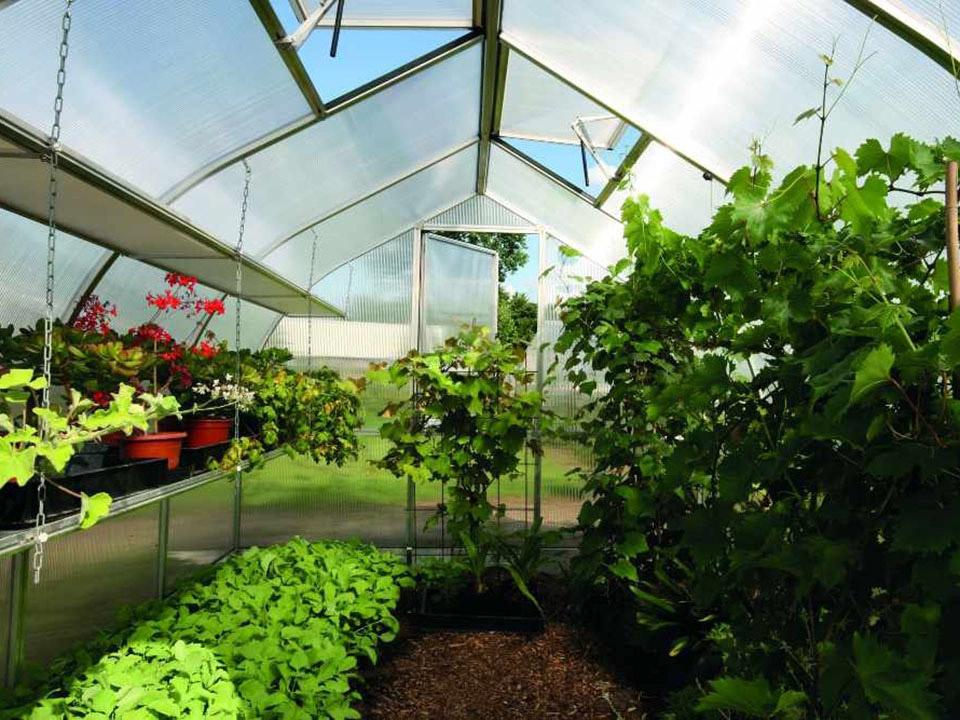
Potting plants and gardening tools can be stored conveniently using shelves and benches. There is no better way to keep your greenhouse tidy and to use the space most efficiently. Some greenhouse kits like the MONT Premium and Riga greenhouses already include shelving. These would be a great choice if you know from the beginning that you are going to need them.
Doors and vents
Greenhouse kits usually come with these must-have accessories. Doors and vents are standard but they vary in size and amount. If you live in a hotter area and if you want to avoid an electric fan at all costs, you may want to add more vents in order to improve the airflow and to keep it cool inside.
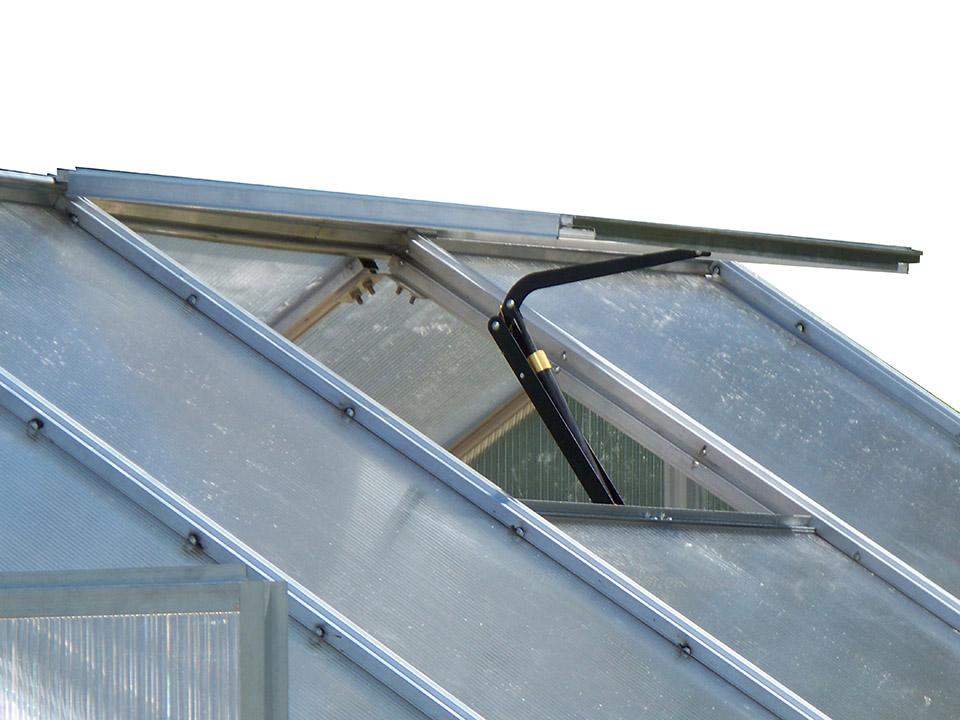
It is common knowledge that plants grow and thrive only in optimal environments and creating one for them is through the proper air circulation. The greenhouse effect happens when the environment’s temperature increases due to the trapped solar radiation in greenhouses. Plants are likely to weaken, or even die if their climate is too hot. This problem is easily resolved with the installation of additional doors and vents in the greenhouse.
If you would like to add another door in order to have an access point on both gables, you may look into additional doors for your specific model or the MONT Special Edition.
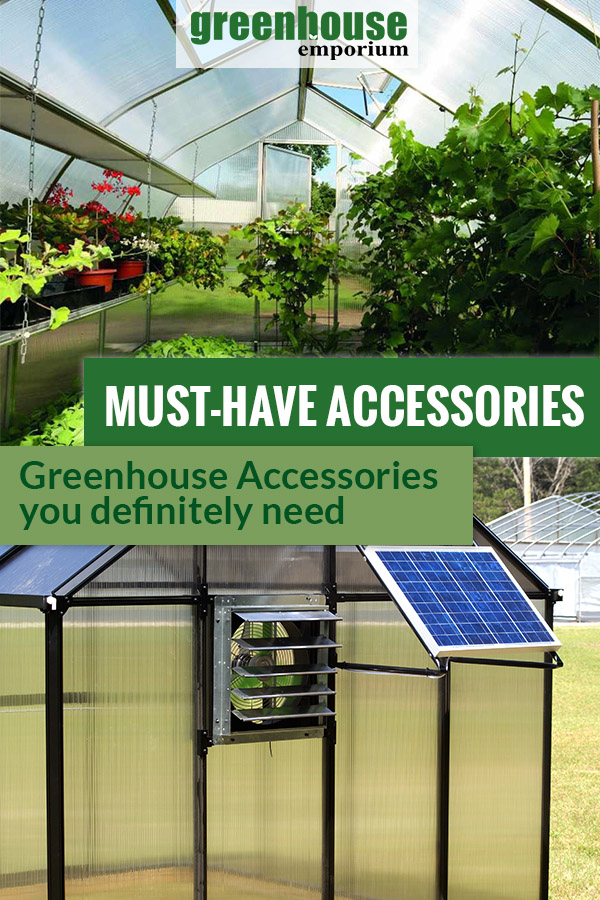
You often have the option of roof vents and louver windows with either manual or automatic openers. If you are living in a windy area, you should secure your roof vents so that they are not blown off. Non-electrical auto openers use the inside temperature. They open when it gets too hot inside and this could happen on a stormy day as well.
Ventilation & Coolers
Removing intense heat inside the greenhouse is one of the most essential purposes of ventilation. Plants may deteriorate when exposed to too much heat. Proper ventilation also lessens the growth of diseases and prevents pests. Releasing excess water vapor prevents condensation and sustain safe moisture levels. Make sure to arrange proper passive or powered ventilation for your greenhouse to function properly.
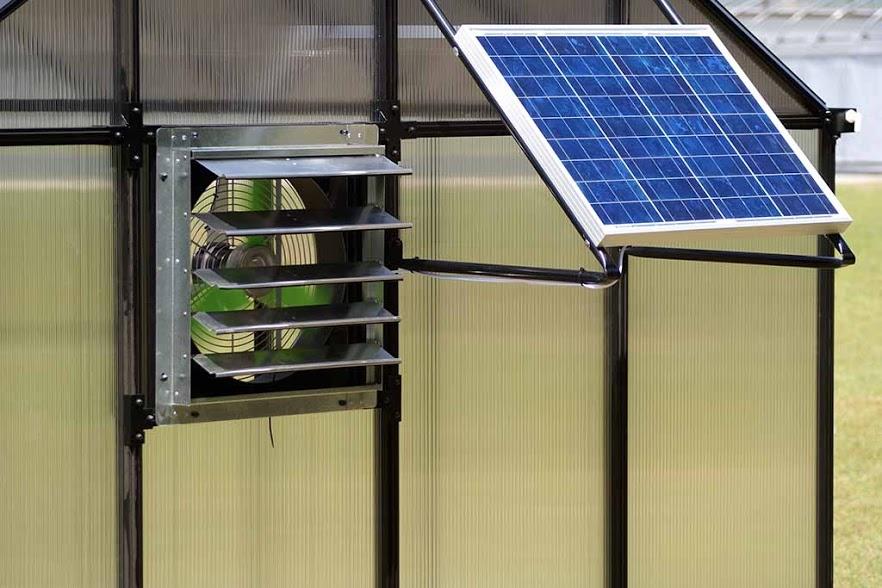
The best way to control high humidity levels is by installing a fan. Moisture can build up on walls or ceilings which could drip on your plants and eventually become an opportunity for disease build-up. Acquire fans with thermostat controls or with varying speed so that you can use it any time of the year. If you don’t like the idea of depending on electricity, you can get a solar-powered fan. Ventilations can affect fundamental plant success like photosynthesis, germination, and even pollination, so be sure to arrange the proper equipment for your greenhouse.
Installing additional ventilation or a cooling system is especially important in hot climate zones with plenty of windless days. So if you are living in a place like this, we highly recommend purchasing a fan or cooler.
Shade cloths
A greenhouse doesn’t overheat during the hottest days when shading is provided. The inside of the greenhouse becomes cooler and solar radiation is minimized as well with the use of shade cloths. Therefore, you only need shade cloth if you are dealing with hot and sunny days. If you pick a glass greenhouse, you should consider purchasing a shade cloth, because the clarity of this type of glazing doesn’t protect your plants from sunlight.
You can either use shade cloths as curtains inside the greenhouse or place them on top (like a blanket). Some are universal and some will fit certain greenhouse brands/models.
There are different types and colors of shade cloths to choose from. There are dark, thick shade cloths as well as lighter-colored and thinner designs. The darker shades are meant to absorb the heat of the sun with the lighter colors as a way to reflect the warmth of the sun.
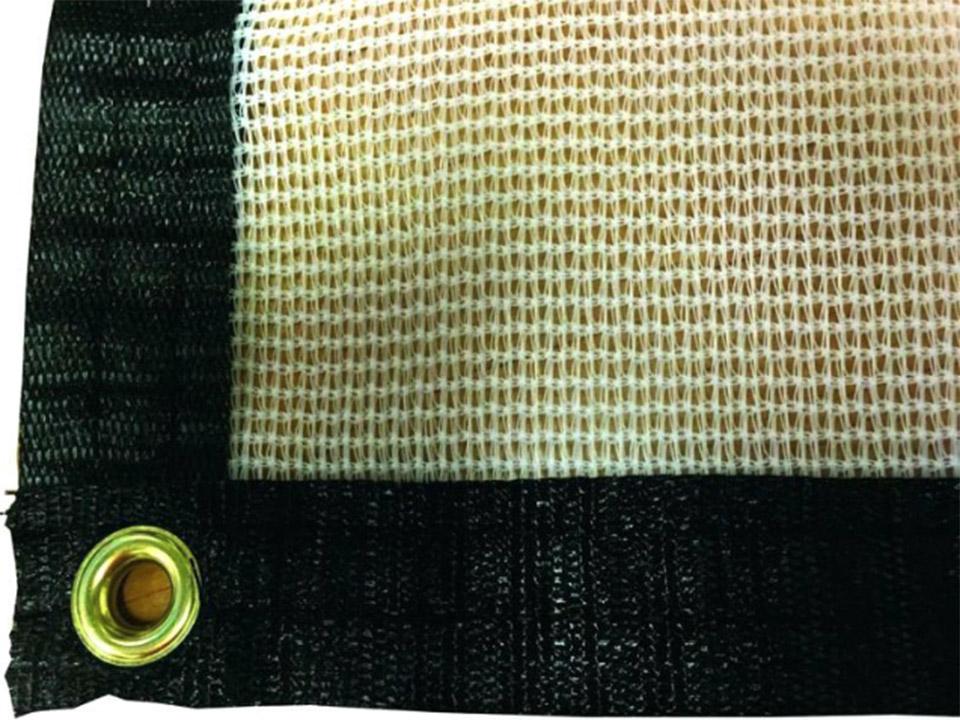
For universal shade cloths, grommets on the end of shade cloth allow you to create your own surface pulleys and lines that can be easily done and removed as needed.
Watering systems
One of the most important things that plants can’t live without is water. If you don’t have the time to water your plants regularly, you should invest in a programmable watering system. Being in control over the environment is the principal reason for taking time, effort, and money on a greenhouse. Make it one step better by having a water system that delivers the right amount to your growing plants.
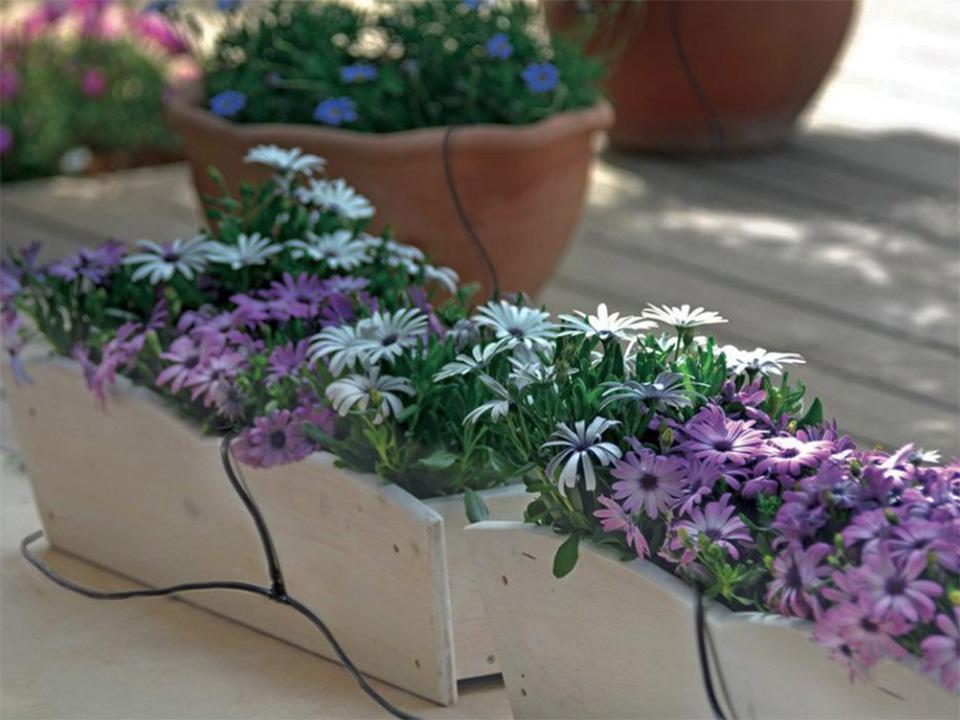
There are various types of watering systems. Often you will hear the recommendation of a misting or sprinkling system. However, some plants are very sensitive to overhead watering. This is solved by a drip irrigation system that provides water right to the roots. Before you purchase a watering system, you should think about what plants you want to grow in order to pick the right watering system.
Heating
You may live in an area, where the outside temperature drops to or below freezing for an extended time. In this case, it doesn’t matter how many plants you grow in your greenhouse and what insulation it has, you will need a heater. Some plants only grow with a temperature of 65-70°F. Even winter plants need a certain temperature to germinate. So it might be a good investment to make your crops thrive.
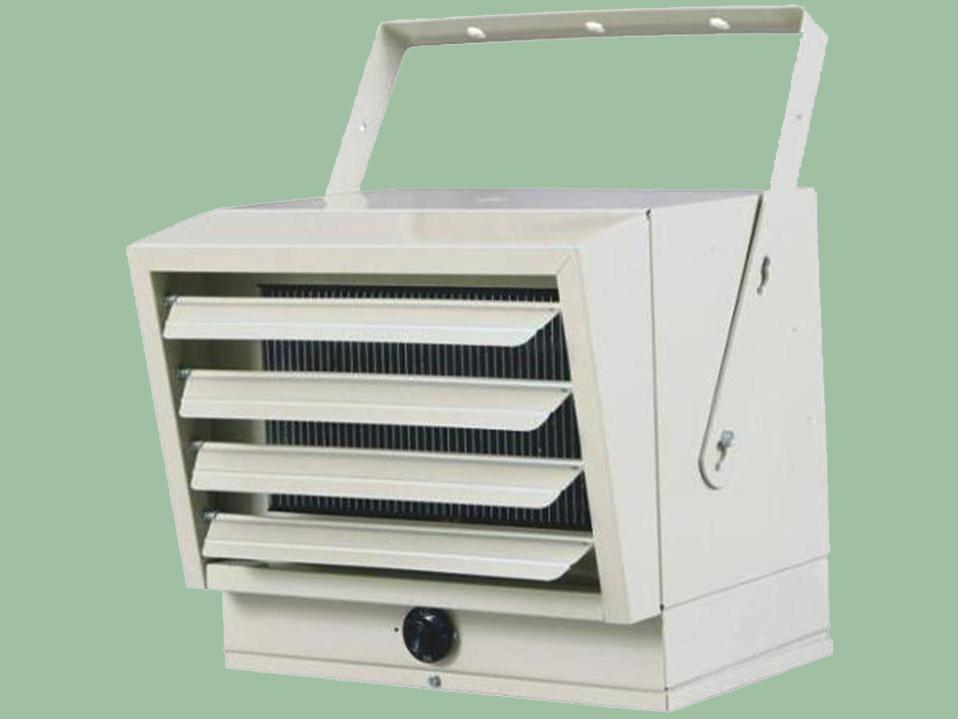
Planting during the winter needs an adequate heater in order to survive even the highest freeze periods. Paraffin heaters may be cheap, but they are high-maintenance. Fan heaters, on the other hand, may be more expensive but their built-in thermostats reduce the workload and the guesswork.
Greenhouse grow lights
One of the best ways to prevent seedlings from growing leggy and pale is to use a lot of bright lights. Grow lights are specifically designed to provide healthy and continuous warmth and light for your plants during winter and nighttime. Power-efficient light bulbs are used for the greenhouse grow lights, making them energy-saving as well. Expect seeds and plants to flourish when grow lights are installed in the greenhouse.
This is a must-have accessory only for people, who want to grow plants that need more light all year round. You don’t need it if you are planning to grow cool-weather plants in winter.
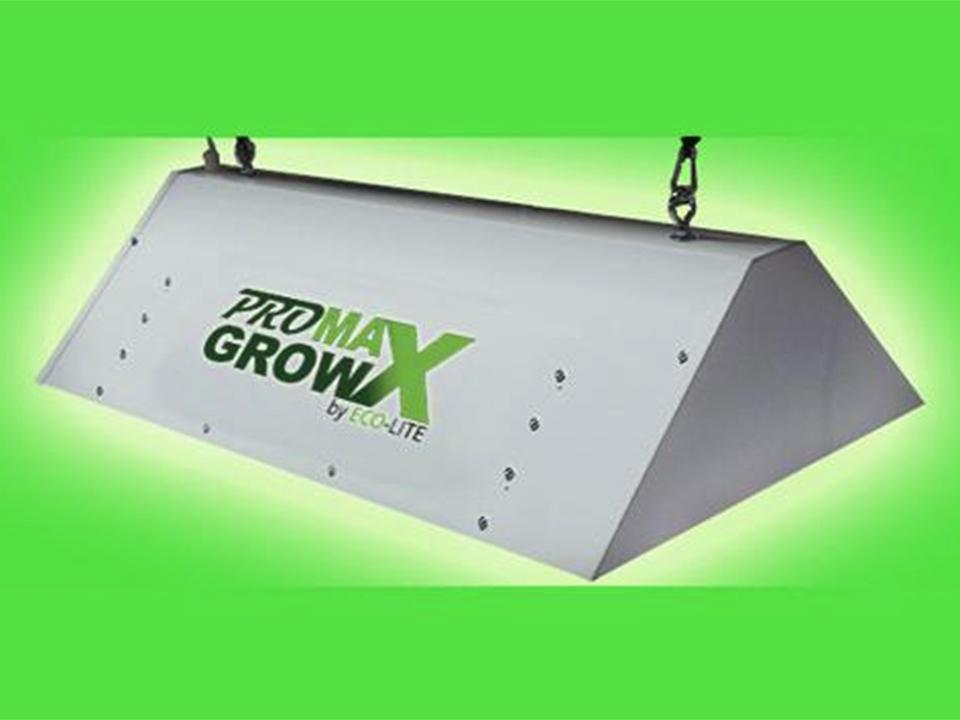
While it is an undeniable fact that LEDs are pricier than fluorescent bulbs, however, the good news about it is that they are not only energy-saving, they also provide excellent light and warmth over a larger plant population.
Ground and floor covering
Ground and floor coverings are a must whether you want proper footing or avert weeds from growing inside your greenhouse. This is obviously only interesting to people, who set up their greenhouse on normal grounds (not concrete or a wooden platform).
Gardening becomes an even enjoyable task with a durable covering on the ground. Just remember to choose covering materials that are durable and easy to maintain. It may be a pricier choice but will provide great value over the years.
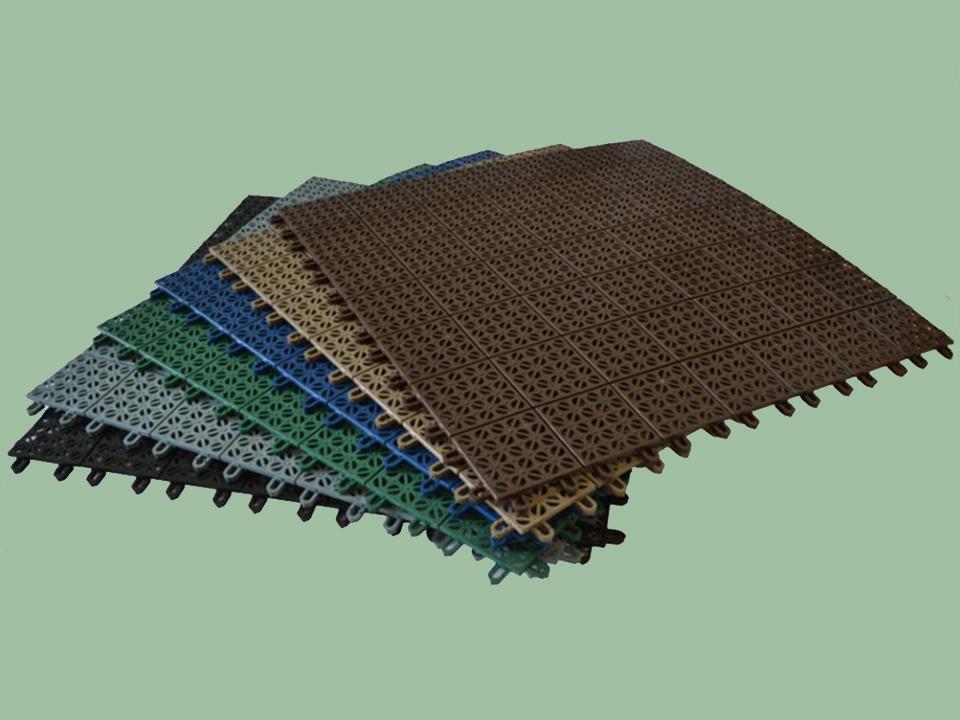
We compiled these must-have greenhouse accessories from what our customers like to purchase. Often stores recommend a bunch of accessories to make more money. We are not like this. We will give you an honest opinion of the experiences we made running this business. If you are still unsure of what equipment you need, think about where you set up the greenhouse, what greenhouse model you have or which one you want to purchase, and what plants you want to grow. You can always call or email us!

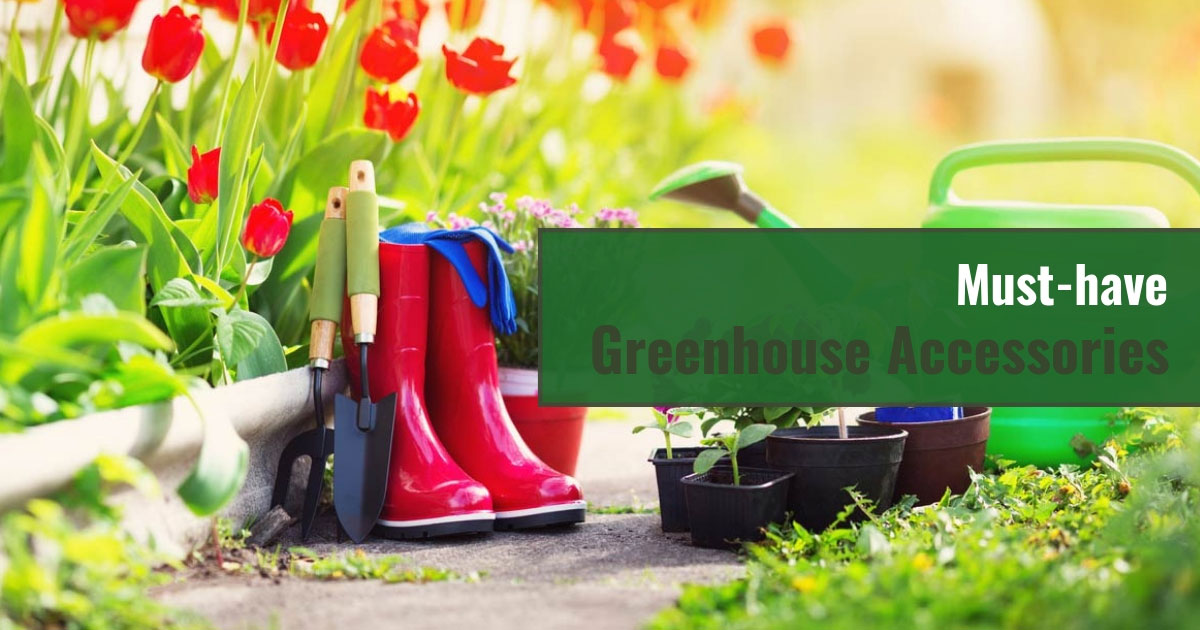























2 comments
Would love some advice on cleaning polycarbonate. I used Wet and Forget Shower and while it took care of the algae and pollen it left white streaks all over it. Any ideas on how to remove that would be hugely appreciated.
Hello Joan! Clean polycarbonate gently using warm water with a few drops of liquid detergent and a microfiber cloth. Put plenty of water in your bucket so that you can rinse the cloth frequently. This prevents any dirt and grit from scratching the polycarbonate. Using a soft, clean microfiber cloth means that any dirt particles will be trapped in the fibers so they will not scratch the polycarbonate. Rinse out the cloth frequently. Depending on the application, we advise cleaning polycarbonate regularly. For a polycarbonate roof, this will mean about once or twice a year. If you notice any black or green deposits appearing, clean the panels as soon as possible or the material may become stained. Chemical cleaning agents such as white spirits and Windex are not recommended for cleaning polycarbonate. These harsh chemicals are not effective as they will not dissolve particles of dust and sand and as these particles are moved back and forth over the surface by your microfiber cloth, the surface will become scratched. Never use thinners, benzene or acetone as these chemical cleaning agents will soften the polycarbonate. They will also leave a permanent haze on the surface. Hope this helps.